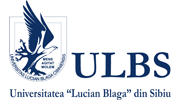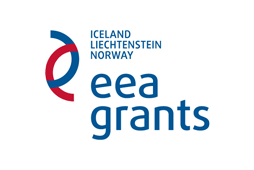Dichlorodiphenyltrichloroethane (DDT)
Traded as: Agritan, Anofex, Arkotine, Azotox, Bosan Supra, Bovidermol, Chlorophenothan, Chloropenothane, Clorophenotoxum, Citox, Clofenotane, Dedelo, Deoval, Detox, Detoxan, Dibovan, Dicophane, Didigam, Didimac, Dodat, Dykol, Estonate, Genitox, Gesafid, Gesapon, Gesarex, Gesarol, Guesapon, Gyron, Havero-extra, Ivotan, Ixodex, Kopsol, Mutoxin, Neocid, Parachlorocidum, Pentachlorin, Pentech, PPzeidan, Rudseam, Santobane, Zeidane, Zerdane.
What is it? The dichlorodiphenyltrichloroethane or DDT, as it is universally known, is an organochlorinated insecticide.
Use (purpose): DDT is an insecticide used extensively starting with the Second World War and it is still used nowadays. It was employed for fighting malaria, typhus and bubonic plague (transmitted by mosquitoes, fleas and lice, respectively) as well as for the protection of crops (potatoes, corn, cotton. etc.). The soil half-life period was documented to be over 30 years long (Arcachon Basin, in France – Thompson, Budzinski et al. 1998).
Current status: Starting from 1970s, the product has been banned in most of the developed countries. Starting from 2001, the Stockholm Convention has included DDT in the category of persistent organic pollutants, and its use is conditioned by specific exemptions for acceptable purposes, such as fighting malaria in the Sub-Sahara African countries, where mosquitos have developed resistance to other types of insecticides. The substance is still being manufactured, sold and used with specific exemptions in countries such as South Africa, Saudi Arabia, Benin, Burkina Faso, Cameroon, Central African Republic, Congo, Ethiopia, Ghana, Mauritius, Liberia, Mali, Niger, Nigeria, Senegal, Sudan, Swaziland, Togo, Zanzibar, Zaire.
Nevertheless, on 17 May 2009, as a result of the fact there are no parties registered for the specific exemptions mentioned in Annex B in relationship to DDT, in compliance with Article 4 point 9 of the Convention, no further records can be made as regards such exemptions, a situation which also involves a ban on DDT in all signing countries of Convention.
In Romania: DDT was used since the 40's and banned since 1985.
Health effects:
- In cases of chronic exposure to small doses: immunotoxicity, possible disruptor of the endocrine system, being a weak oestrogen, disruptor of the thyroid and pituitary gland, reproductive and renal disorders, neurotoxic, carcinogenic (breast cancer among others). The neurotoxic effects were linked to a new debilitating neuropsychiatric syndrome (the X syndrome) both in humans and cattle.
- In acute exposure: hypersensitivity to cutaneous stimuli, tingling or crawling sensations, headaches, paraesthesia, itching, back of the head pain and stiffness, closed throat sensation. Painful throat, persistent cough, oppressing sensation and powerful pain in the arms, articular pains, generalised muscle weakness, fatigue, anxiety, dizziness, nausea, vomiting, lack of limbs coordination, tremor, twitching, hypertonia, confusion, seizures, coma and respiratory arrest.
Exposure limits, deadly dose: maximum allowed concentration 0.0002 micrograms/L for drinking water and for molluscs, crustaceans and fresh water fish.
Contamination sources:
- Occupational: elimination of old deposits of DDT and insecticide and antimalarial treatment administration in locations where the substance has been historically used.
- Air: aerosols from the soil sprayed with DDT, in locations where the substance is used.
- Soil: direct skin contact in locations where the substance is used or with soils suffering a strong historical contamination.
- Food: the main exposure source worldwide, including in countries where DDT is no longer used for many years, is food : root vegetables, green vegetables – lettuce, spinach, onion, and corn etc., grown in recently contaminated soils or in soils historically polluted; fish and derivates of fish from waters polluted through the ground water and drainage from fields recently contaminated or historically polluted; milk and dairy products; meat and animal products fed or pastured on polluted grounds.
Useful links:






